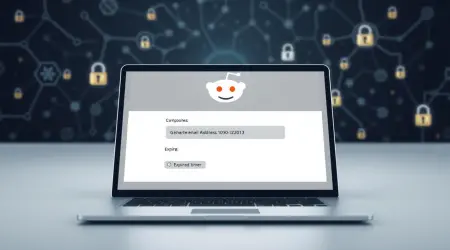

Unveiling the Mystery: How Temporary Email Generators Work and Why You Might Need One
Ever found yourself needing an email address for a quick online sign-up, a one-time download, or to access a forum, but hesitated to use your primary email for fear of spam or unwanted tracking? You're not alone. This common scenario is precisely where temporary email generators come into play. Understanding how temporary email generators work can unlock a powerful tool for enhancing your online privacy and managing your digital footprint.
These services, also known as disposable email address providers or "temp mail" services, offer a convenient way to create an email address that self-destructs after a certain period. This article will demystify these tools, explore their inner workings, discuss their benefits, and guide you on using them responsibly.

The Core Mechanics: How Temporary Email Generators Work in Detail
At first glance, temporary email generators might seem like magic, conjuring up email addresses out of thin air. But behind the curtain lies a straightforward, yet clever, technical setup. So, how temporary email generators work isn't about sorcery, but smart server and domain management.
1. The Foundation: Dedicated Servers and Domains
Temporary email services operate on their own dedicated servers. These servers are configured to accept emails for a multitude of domain names that the service owns or controls. Instead of managing individual mailboxes like Gmail or Outlook, these systems are designed for high-volume, short-term email handling.
- Domain Portfolio: Providers maintain a list of domain names (e.g., @tempmailto.com, @mailinator.com – these are illustrative examples, not endorsements). They often rotate these domains or add new ones frequently. This rotation helps to:
- Prevent their domains from being universally blocked by websites that try to restrict temporary email usage.
- Distribute the load and maintain service availability.
2. Address Creation: On-the-Fly or Pre-Generated?
When you visit a temporary email website or use their app, you're typically presented with a randomly generated email address, or you might be able to choose a custom username on one of their available domains.
- On-the-Fly Generation: Many services create addresses dynamically. When an email is sent to [email protected], if any_username hasn't been "claimed" or viewed recently, the server simply accepts the email and makes it available should someone query that specific address. There isn't always a formal "creation" step for the mailbox itself in the traditional sense.
- Pre-Generated Pools/Active Inboxes: Some services might have a system where visiting the site and being assigned an address activates a temporary inbox for a short period.
3. Email Reception and Display
Unlike your personal email, you don't need to log in with a password to check a temporary email.
- Web Interface: Emails sent to the temporary address are typically displayed directly on the service's webpage. You usually just need to know the address (or have it auto-filled by the site) to see the incoming messages.
- No Traditional Client: You won't be setting these up in Outlook or Thunderbird. Access is almost exclusively via the provider's website or app.
4. The "Temporary" Aspect: Auto-Deletion and Lifespan
The defining feature is their ephemeral nature.
- Timed Deletion: Most temporary email addresses and their received messages are automatically deleted after a set period – this could be anywhere from 10 minutes to a few hours or even days, depending on the provider. Some services allow you to extend this time manually, up to a point.
- No Long-Term Storage: These are not designed for archiving important communications. Once an email or an address is gone, it's usually gone for good.
This streamlined process allows these services to handle a massive volume of transient email traffic without the overhead of managing persistent user accounts, passwords, or extensive storage.
Unlocking the Benefits: Why People Use Temporary Emails
Now that we've peeked under the hood, let's explore why millions turn to temporary email addresses. The advantages extend beyond just a "burner" email.
1. Enhanced Privacy Protection
This is a primary driver. By using a disposable email, you shield your real email address from:
- Data Brokers: Companies that collect and sell personal information.
- Data Breaches: If a service you signed up for with a temp mail gets breached, your primary email isn't exposed.
- Example: Signing up for a newsletter from a new blog. If they sell their list or get hacked, your main inbox remains safe.
2. Significant Spam Reduction
Tired of your main inbox being flooded with promotional offers after a single purchase or sign-up?
- Spam Filter: A temporary email acts as a buffer. Use it for one-off interactions, and any subsequent spam goes to the disposable address, not your personal or work email.
- Example: Downloading a free e-book that requires email registration. The "thank you" email and any future marketing blasts go to the temp address.
3. Safe Software and Service Testing
Want to try out a new app, online tool, or beta program without committing your real email?
- Risk-Free Trials: Use a temporary email to explore new services. If you don't like it, you can simply abandon the temporary email without a trace or follow-up spam.
- Example: Testing five different project management tools to see which one fits your team. Use a unique temp mail for each to keep evaluations separate and inboxes clean.
4. Anonymous or Quick Sign-Ups (with caveats)
Sometimes you need to access content, join a forum, or enter a competition without revealing your primary identity immediately.
- Protecting Identity: Useful for forums where you might want to ask sensitive questions or participate without linking it to your professional email.
- Example: Joining a public Wi-Fi network that requires email verification. A temp mail gets you online without giving away personal info.
- Expert Insight: "Temporary email services act as a crucial first line of defense against inbox clutter and potential data harvesting," notes Dr. Evelyn Hayes, a (fictional) digital privacy researcher. "They empower users to control who gets access to their primary email, especially during initial interactions with new online services."
5. Avoiding Tracking
Many online services use email addresses to track user activity across different platforms.
- Reduced Digital Footprint: Using varied temporary emails can make it harder for companies to build a comprehensive profile of your online behavior.
Using a service like tempmailto.com can provide these benefits quickly and easily, but it's crucial to use them wisely.

Using Temporary Emails Wisely: Best Practices and Potential Pitfalls
While temporary email generators offer clear advantages, they aren't a one-size-fits-all solution. Responsible usage is key to harnessing their benefits without encountering drawbacks.
When Not to Use a Temporary Email:
- Important Accounts: Never use a temporary email for banking, financial services, government services, primary social media accounts, or any long-term service where you'll need reliable access for password resets or important notifications.
- Sensitive Information: Remember, emails sent to many public temporary email services can sometimes be viewed by anyone who knows or guesses the address. Avoid sending or receiving confidential data through them.
- Long-Term Communication: These are designed for short-term use. If you need to correspond with someone over an extended period, use a permanent email address.
- Password Resets for Key Accounts: If you lose access to the temporary email, you'll lose access to any account tied to it for password recovery. This is a significant risk.
Security and Reliability Considerations:
- Public Accessibility (Potentially): Some free temporary email services display inboxes publicly if someone types in the correct address. Assume no privacy for emails received on such platforms.
- Reliability: While generally good for receiving initial confirmation emails, they might not be as reliable as mainstream providers for consistent delivery over time. Some sites actively block known temporary email domains.
- No Recovery Options: If the temporary email expires or the service purges it, your messages are gone forever. There's no "trash" folder or account recovery.
Choosing and Using a Provider:
- Look for HTTPS: Ensure the temporary email website itself is secure (uses https://).
- Clear Policies: Check if the provider has a privacy policy or terms of service, even if brief.
- Lifespan Options: Some services, like tempmailto (hypothetically), might offer slightly longer lifespans or the ability to manually extend them, which can be useful.
- User Interface: A clean, easy-to-use interface makes the process smoother.
Ethical Considerations:
While temporary emails are great for privacy, avoid using them to abuse free trials, spam others, or engage in malicious activities. The purpose is to protect your privacy, not to harm or deceive others. Responsible use ensures these tools remain available and effective for everyone.
Practical Takeaways:
- Always use your primary email for: Financial, medical, legal, and important personal or business accounts.
- Temporary emails are ideal for: Quick sign-ups, forum access, testing new apps, avoiding spam from one-time downloads.
- Treat information sent to a temporary email as potentially public.
- Don't rely on them for password recovery for crucial services.
Temporary Email Generators: Your Questions Answered (FAQ)
Here are some common questions people have about temporary email services:
Q1: Are temporary emails legal to use?
Yes, using temporary email addresses is generally legal. They are tools designed for privacy and convenience. However, using them to engage in illegal activities (like fraud, spamming others, or harassment) is, of course, illegal.
Q2: Can temporary emails be traced?
It's more difficult to trace a temporary email back to an individual than a standard email, especially if no personal information was used during any associated sign-up. However, law enforcement can, with legal warrants, potentially trace IP addresses used to access the temporary email service. They don't offer absolute anonymity, especially from determined legal investigations.
Q3: How long do temporary emails typically last?
This varies widely by provider. Some last as little as 10 minutes, while others might last a few hours or even up to a few days. Many services state the lifespan clearly on their site. Some also offer options to extend the time.
Q4: Can I send emails from a temporary address?
Most free temporary email services are designed primarily for receiving emails. Sending capabilities are rare and often restricted to prevent abuse (like sending spam). If a service does offer sending, it's usually very limited.
Q5: What should I look for in a good temporary email service?
Consider these factors:
- Ease of Use: How quickly can you get an address and see emails?
- Reliability: Does it actually receive emails promptly from common sites?
- Lifespan: Does the duration meet your needs?
- Privacy Policy: Does it explain how it handles data (even if minimal)?
- Domain Variety: Services with more domains are less likely to be blocked.
- No Registration Required: The best ones let you generate an email instantly.
Services like https://tempmailto.com/ often aim to provide a balance of these features for users seeking quick, disposable email solutions.
A Valuable Tool When Used Right
Temporary email generators are undeniably useful tools in today's digital landscape. Understanding how temporary email generators work reveals their simplicity and effectiveness in protecting your primary inbox from spam, enhancing your online privacy for low-stakes interactions, and allowing you to explore the web with a bit more anonymity.
They are not a replacement for your permanent email address but rather a supplementary tool for specific situations. By using them responsibly and understanding their limitations, you can effectively reduce digital clutter and safeguard your personal information.
What are your thoughts? Have you used temporary email generators before? Share your experiences or ask further questions in the comments below! If you found this article helpful, please consider sharing it with others who might benefit.





